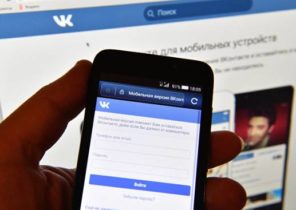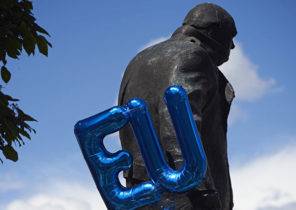Washington — Since the White house, the United States settled current administration, talking about international development are often reduced in the collective plaintive song. It is a kind of Elegy, even in the mouths of optimists.
This song has many lines. It starts with the fact that the approaches on the principle of “America first” has led to a serious decline in concessional foreign aid. Though the relief (especially in the case of geopolitical conflict and struggle with Islamic extremists), the funds allocated for assistance, which has historically been directed to long-term programmes (water, health, financial inclusion, agriculture) has decreased. And the preferential assistance, which still remains, is slow.
Financial donors direct more resources to domestic social problems, for example relating to immigration or crimes involving weapons. In addition, according to estimates, this year during the presidential election campaign in the United States will spend about $10 billion on advertising. And the beginning of the pandemic Covid-19 resulted in a new tremendous financial stress. Economies and households experiencing difficulties, the borders are closed, tougher nationalist mindset.
Here we come to the chorus. At exactly the moment when advanced technology, data, and hybrid financial instruments will give us the opportunity to resolve the most acute problems of the world (world poverty, lack of prospects for young people, climate change), the United States ceased to sing his Aria.
Since the fall of the Berlin wall from extreme poverty managed to get 1.9 billion people, but there are still 650 million. Thanks to such tools as digital technology, mobile money, and data Analytics, the goal of eradicating poverty has become attainable for us (although the pandemic has made her somewhat more distant).
China’s role in development programmes helped to make a revolution in international development. Starting in 2013, the initiative “Belt and road” (abbreviated BRI), China aims to expand its geopolitical influence through infrastructure investment of about $1 trillion, which is sent to more than 100 countries. Four years later, China announced the launch of the program “Digital silk road”, which aims to build the IT infrastructure in the countries participating in the initiative BRI.
China’s achievements in the field of big data, broadband Internet, electronic trade and financial integration has caused many analysts to shake off the dust from the analogies of the Cold war and turn on the alarm: China is overtaking America. Today requires a comprehensive, active strategy that America used, taking the place of leader for the global table.
When the Soviet Union demonstrated their superiority in the technology of space rockets, launching in 1957, “Sputnik 1”, the Americans suddenly was scared that the Soviets will begin to arm themselves in space. But President Dwight Eisenhower was not just to increase military spending to restore America’s advantage in hard power. He understood the strategic importance of soft power and directed public investment in science, technology and education. America participated in the race not just for stars and planets. It was a race for the hearts and minds, and it continues today.
Since then, we have repeatedly seen what happens when America throws its weight to support programs that help to cope with global threats. In 2003, the administration of George W. Bush Jr. took up the fight against HIV/AIDS plan, PEPFAR, the largest in the history of the medical program, focused on combating one disease. 11 years have passed and the Obama administration has responded to the Ebola outbreak in West Africa is a complex action that helped to end this crisis in 18 months.
The current administration uses to assistance programmes of foreign development “Corporation Finance international development” (abbreviated to DFC). Corporation DFC provides loans and guarantees to investors willing to do business in developing countries and can perform a limited mission, although it lacks thoughtful guidelines to mitigate the risk of changing political winds and whims. However, even in this case, the DFC alone will not eradicate world poverty. Can’t do no individual program or area of work, be it charity, data technology, digitalisation and socially-focused investments. Required a bold plan that will combine all of these precious resources.
The Grameen Foundation, which in 2016 has helped more than 14 million poor people, knows first-hand about the positive impact of these new or new used resources for the poor. Accurate, current data allow Grameen to understand the needs of poor people in the financial and agricultural tools, including digital technologies, and help them out of poverty.
Digitalisation transforms the lives of people. In 2020 the Internet of things will allow you to communicate roughly 38.5 billion devices worldwide. This is the reason why in India local agent Grameen Komal, using a mobile phone, provides convenient, quick access to financial services for their poor neighbors in the village. Creative financing is the reason the “Mirador Project”, the client Taro Works, a unit of Grameen uses clean technology cook stoves to reduce pollution by three billion people worldwide cook on open fire. This project helps to reduce emissions of greenhouse gases and is partly funded by the sale of certificates to offset your carbon emissions (“carbon offsets”) registered with the Gold Standard.
Even today, the world is quite ready to escape from the grip of poverty. If America does not take its rightful place at the table, then it will take you to the area for children, and its voice be not heard, its interests will be ignored. Adults in a conversation will be dominated by China and other countries, whose values are very far from the values of Western democratic countries.
Steve Hollingsworth — President and CEO of Grameen Foundation.







